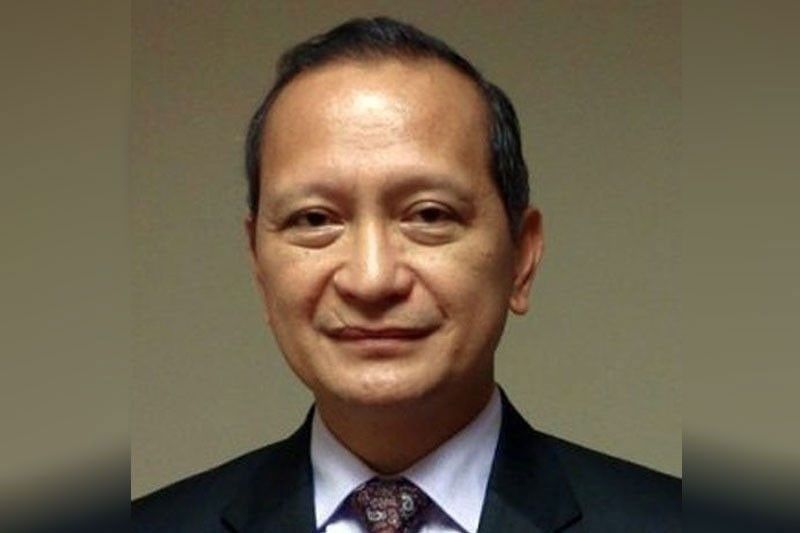Ex-DA chief, farmers’ groups back replacing Sebastian

MANILA, Philippines — Former Department of Agriculture (DA) secretary Leonardo Montemayor and other farmers’ groups yesterday backed the move of Agriculture Secretary Francisco Tiu Laurel Jr. to implement a major revamp at the agency, after he replaced Undersecretary Leocardio Sebastian as undersecretary for rice industry development, the flagship program of the agency.
“It’s Secretary Laurel’s call as to who will constitute his team. Ultimately, the proof of the pudding is in the eating. Regarding Usec. Leo (Sebastian), technically, I think he was not removed. He resigned or chose to retire. Although he was effectively sidelined as a mere member of the secretary’s technical advisory group,” Montemayor told The STAR.
Sebastian opted to retire effective Feb. 1, after he was replaced as undersecretary for rice industry development by officer-in-charge Roger Navarro.
Laurel issued Special Order No. 1 downgrading the position of Sebastian to a member of his technical advisory group.
For his part, Federation of Free Farmers (FFF) national manager Raul Montemayor said that it is the prerogative of Laurel to reorganize his agency.
“The DA needs a thorough assessment of its programs, new ideas and approaches and a fresh restart, because the billions being poured into agriculture in the past few years do not appear to be generating the desired effect, especially in the rice sector,” Montemayor said in a separate message to The STAR.
He noted that the DA continued its programs despite no significant outputs.
“We noticed that the DA has maintained old programs despite not proven effective. The DA tends to repeat the previous programs and ask for additional funding,” Montemayor added.
He said the DA lacks analysis on the effectiveness of current projects.
“The Department of Budget and Management keeps on funding the projects without actually determining if the program was actually a success. It prioritizes the release of funding to agencies who utilize their budget. What kind of budgeting is that?” Montemayor asked.
Farmers’ group Samahang Industriya ng Agrikultura chairman Rosendo So maintained that the national rice program of the DA was slow under the leadership of Sebastian.
“Under the leadership of Sebastian, the P5,000 cash assistance for farmers in 2023… only started to be released in 2024,” So said.
He added that Laurel should not include the DA regional offices in the major shakeup.
“It is better to maintain the status quo in the regions. The delay in the implementation of the rice program was in Manila. The regions were effectively implementing the programs,” So said in a separate interview with The STAR.
On the other hand, he questioned the appointment of Navarro.
“Usec. Navarro was formerly with the Philippine Maize Federation Inc. I am not too confident that he can handle (rice industry development) as his previous experience was with the corn industry. The corn industry did not prosper when he handled PhilMaize,” So noted.
Supply worries
Meanwhile, Montemayor said yesterday that the 90-day rice stocks as claimed by the DA will only be good until the end of March 2024, adding that the 500,000 metric tons of the imported staple from India will last for only 12 to 14 days.
“The DA has been saying that the rice stocks last Dec. 31 will be enough for 90 days, that means that by the end of March, we will no longer have stocks of rice and if no rice imports arrive, we will have a problem. We will experience tightness in the supply anew,” he said in a radio interview.
Montemayor was reacting to the statement of Agriculture Assistant Secretary and spokesman Arnel de Mesa that with the total imports of 3.5 million metric tons and more than 20 million metric tons of local harvest, the country’s inventory will be enough for 80 to 90 days.
“They announced that 500,000 tons (of imported rice) will arrive, but that is too small compared to our daily consumption. It is only good for 12 to 14 days consumption,” he added.
Montemayor said the retail price of the staple food has increased in the last three weeks.
“There was a slight increase as traders anticipate the tightness in supply starting February or March,” he said.
Montemayor said that rice stocks are now in the hands of the traders, as the harvest already ended in November 2023.
“They (traders) are dictating the price and aside from this, the retailers also increase their price for additional revenues,” he noted.
According to Montemayor, lower class well-milled rice ranged between P52 and P55 per kilo and P60 per kilo for high quality.
He also discounted the possibility that the retail price of rice will return to P41 per kilo.
“One factor is the high price in international trade. Our deficit for one year is almost three million compared to our production and our total consumption. We import 20 percent (of our total rice requirement). If imported rice is high, the tendency is for the local rice to increase. Until we improve our local production, we don’t expect the retail price of rice to normalize and go down below P50 (per kilo),” Montemayor added.
He said palay production is also being threatened by the El Niño phenomenon.
Montemayor said millers are also involved in speculation as they limit the release of rice in the market.
“They are involved in speculation, speculative behavior as millers see the continued increase in the prices because of possible tightness in the supply in March,” he noted.
At the same time, Montemayor urged the public to stop the wastage of rice. “We should not only look at the supply side but also the demand. We are encouraging the public not to waste rice,” he said.
He warned that the shortage in the supply of rice can be felt starting significantly in the third quarter.
“We anticipate that we will have problem starting July, August, September as starting March, our stocks are almost depleted, but the harvest will come in, and then in May, June, when rains will not come in, farmers will not be able to plant. So, from May, June, all the way to September, we don’t have harvest. The next harvest after March will be October, November. If we cannot have a good harvest in May and April, we will have bigger problems,” Montemayor said.
- Latest
- Trending






























